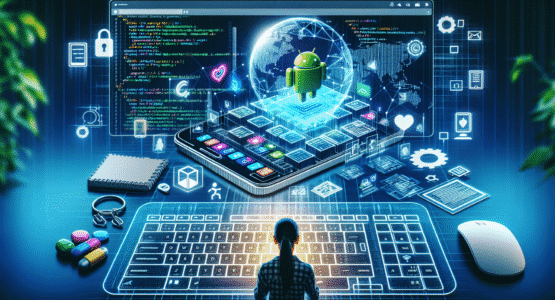Android’s Evolution: A New Desktop Mode Experience on the Horizon
Get ready for a game-changing development in the Android ecosystem! Google appears to be quietly working on something that could transform how we use our smartphones. Hidden within Android’s source code, there’s compelling evidence of a comprehensive desktop mode feature that’s got tech enthusiasts buzzing with excitement.
What’s particularly fascinating is the depth of this implementation. We’re not talking about basic screen mirroring here – this appears to be a full-fledged desktop computing experience. The source code reveals sophisticated window management capabilities that would let you resize and move applications around just like you would on your laptop or desktop computer.
More Than Just Another Screen Sharing Feature
While Samsung’s DeX and Motorola’s Ready For system have already dipped their toes into these waters, Google’s approach seems more ambitious. By building the desktop mode directly into Android’s core, they’re potentially creating a universal solution that would work across all Android devices, regardless of manufacturer. This standardization could be a huge win for users who switch between different Android brands.
The technical implementation looks impressive, with support for features we’ve come to expect from traditional desktop environments. Think window snapping, multi-window arrangements, and even a taskbar-like interface at the bottom of your screen. What’s more, the system appears designed to handle both touch and mouse inputs seamlessly, making it truly versatile.
The Future of Mobile Computing
While Google hasn’t officially announced this feature yet, the detailed implementation in the source code suggests this isn’t just some experimental project gathering dust in a developer’s corner. Imagine being able to walk into any room with just your phone, plug it into a display, and instantly have access to a full desktop environment. The productivity implications are enormous!
This development represents another step in the ongoing convergence between mobile and desktop computing. As our smartphones continue to pack more processing power than some laptops from just a few years ago, the distinction between mobile and desktop devices becomes increasingly blurred. A native desktop mode could be the bridge that finally connects these two worlds.
What This Means for Users
The introduction of a universal desktop mode could revolutionize how we think about mobile productivity. Whether you’re a business professional needing to make quick edits to a presentation, a student working on assignments, or just someone who wants to enjoy their mobile apps on a larger screen, this feature could make your Android device even more versatile.
While we’ll have to wait and see if this desktop mode implementation makes it into a future Android release, the potential is exciting. It could mark the beginning of a new era where your smartphone truly becomes your primary computing device, capable of adapting to whatever screen or input method you have available.



